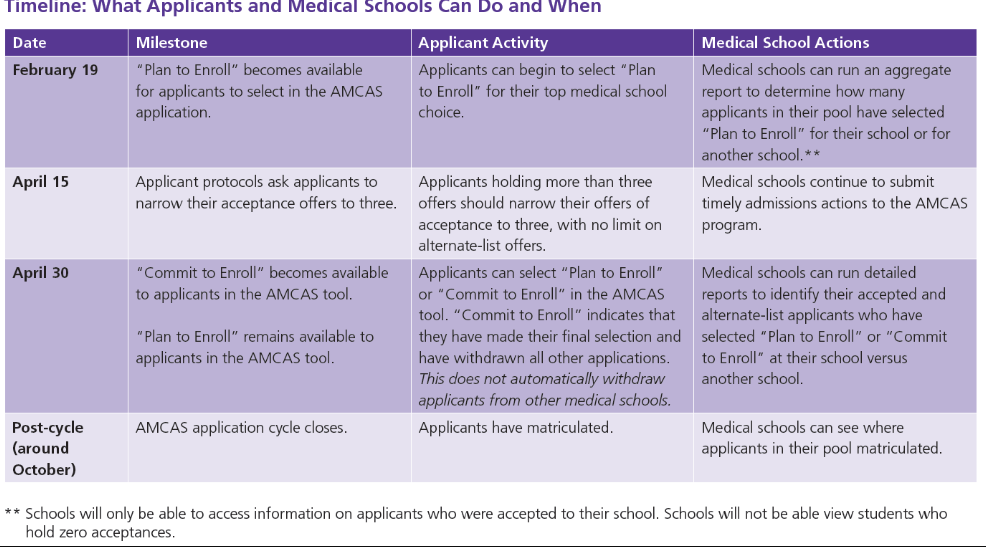AAMC Multiple Acceptance Rules
Today is the first day the new AMCAS Choose Your Medical School tool will be available within the AMCAS application. Only applicants with at least one current acceptance to medical school will be able to see and use this new tool. You can only select one school at a time. You are not required to select a school at this point. This tool is in response to the recent change in the AAMC traffic rules that detail when schools will have access to information about the candidates they have accepted. Personally, I think this is incredibly confusing and I will do my best to help clarify for the applicant.
Schools can now only see the number of accepted students who have selected that school using the AMCAS tool rather than the previous "Multiple Acceptance Report". This is a means to help schools with enrollment management- i.e. knowing how many students to take off the waitlist.
Up until this year the system included a "Multiple Acceptance Report" (MAR) where school could access reports on their admitted and waitlisted students in February and all schools could see the National Acceptance Report on April 30th which lists all applicants with an accepted or matriculated action. Interestingly enough, the MAR actually survived a legal antitrust challenge recently. So the MAR was deemed legal, however it was abandoned last year. The lawsuit is visible here for those interested.
What does this new AMCAS tool mean for APPLICANTS?
First off, the rules have not changed regarding when you need to make decisions and you should always defer and read carefully any school-specific rules and requirements.
Until April 30th applicants can continue to hold multiple acceptances, remain on alternate lists, and continue to interview at other schools.
April 15th: Applicants need to narrow their acceptance offers to three. They can stay on as many waitlists as they want.
After April 30th You need to choose a single school.
The change is primarily who has control over releasing your information about multiple acceptances to medical schools - the control is now in the student's hands using the AMCAS tool until April 30th.
The AAMC does not require you to use the tool, however, certain medical schools may require you to use it. Even if they require you to use it you are not required to make a selection until April 30th. Using the tool before April 30th does not benefit the applicant but does help the medical school with figuring out its enrollment numbers.
Before April 30th:
Schools will receive an aggregate (non student or school specific) report that will give them an idea of how many of their accepted students have selected "plan to enroll"
After April 30th:
Schools where you are accepted or waitlisted will be able to see where you have identified "plan to enroll" or "commit to enroll" If you select "commit to enroll" then all other schools where you have been accepted or waitlisted will be notified of your selection but will not know the name of the school you selected. "Commit to enroll" does not withdraw your applications from other medical schools. You must still communicated with all schools directly according to their specific policies.
This is not meant to substitute for direct communication with medical schools. It is just a means for medical schools to get an idea about enrollment.
What does this mean for APPLICANTS who are waitlisted with no acceptances?
1. Similar to previous cycles there will be movement off of waitlists after April 30th when students are required to make final decisions.
2. Similar to previous cycles waitlisted applicants are reevaluated until the incoming class is full or the first year class starts.
3. Sending a well crafted letter of intent MAY have more impact this cycle in helping your movement off of a waitlist.
4. No one is really clear how admissions committees might respond to these changes, however, there may be a movement towards under admitting a class and relying more heavily on a waitlist so they do not over enroll which is more difficult to correct than under enrollment.

